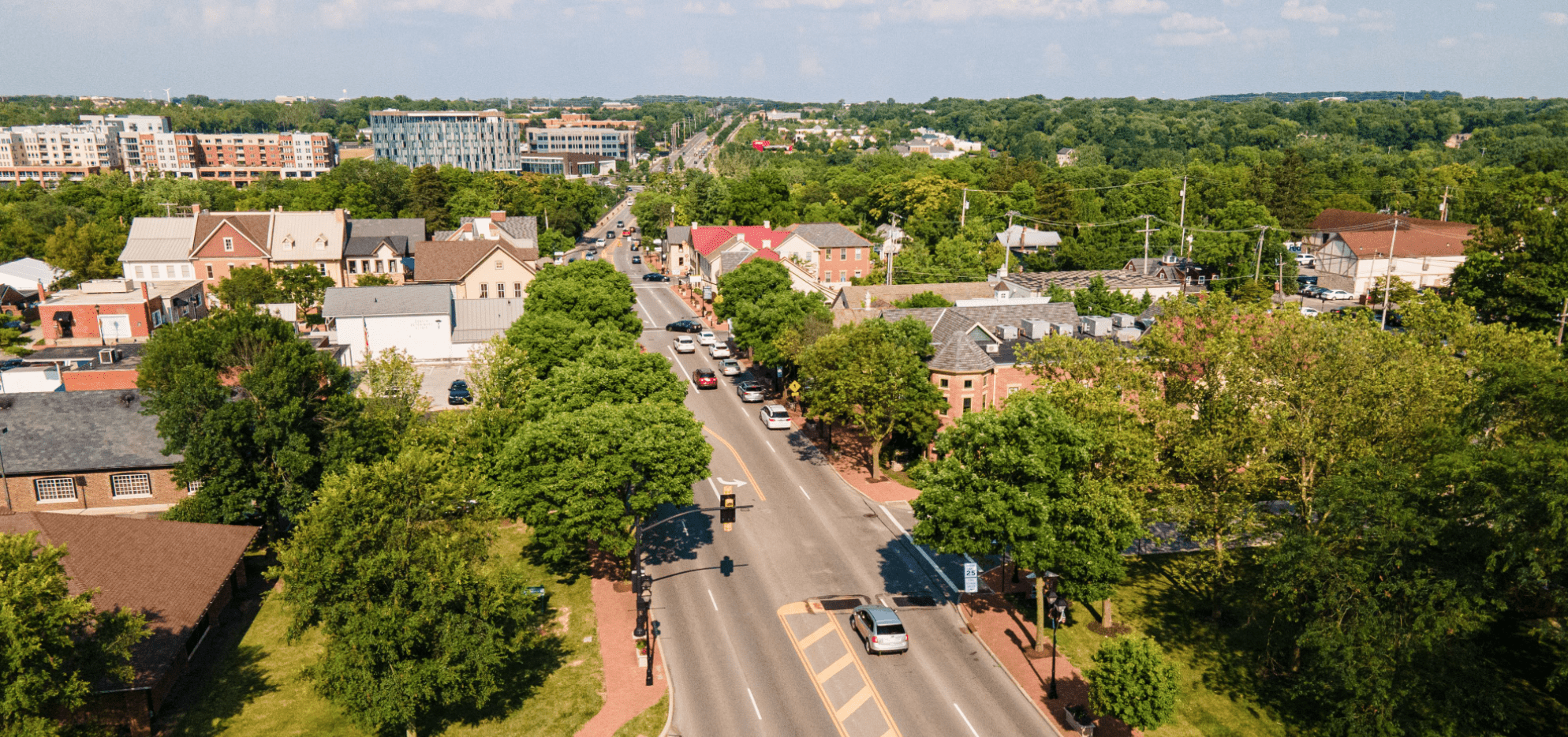
Digital Innovation Guides the Future of Smart Cities
By The Beta District
Just as the explosion of internet-enabled devices has revolutionized the way we run our homes, technology is transforming how cities and towns operate. The term “smart city” is characterized in many ways, including this definition from global technology company Thales Group:
“A smart city is a framework, predominantly composed of information and communications technologies to develop, deploy, and promote sustainable development practices to address growing urbanization challenges.”
This post will lay out the case for smart cities, share examples of what smart cities look like in practice, (including The Beta District’s hometown of Columbus, Ohio) and explain why The Beta District is the perfect place to test new smart city technologies.
Why invest in smart city technology?
The United Nations estimates that, by the year 2050, nearly 70 percent of the world’s population will live in urban areas. That’s a lot of people to manage, and that problem is compounded by other challenges, such as the effects of climate change. Smart cities can help address those challenges in a number of ways, as noted in this article from TechRadar. It states that advanced technologies like artificial intelligence and cloud computing can support cities’ “strategic digital priorities, increase the efficiency of its resources and processes, improve transparency and accountability toward citizens, and enhance its economic power.” A Forbes article from 2020 cited statistics from a McKinsey Global Institute report that stated “smart city technology can improve key quality of life indicators – such as the daily commute, health issues, or crime incidents – by 10 to 30 percent.”
What does a smart city look like?
This article from Global Trade Magazine offered several hypothetical and real-life applications of technology in smart cities, including:
- Installing a system that uses sensors in both commercial and residential areas that analyzes water consumption patterns and sends messages encouraging conservation to residents or businesses whose consumption is high.
- Using analytics to examine the relationship between income levels and access to certain services, such as grocery stores, public transit, or green spaces, and applying that data to inform future development plans.
- Implementing a system like Nevada’s Waycare, which uses predictive artificial intelligence to reduce vehicle crashes and speeding on key thoroughfares.
Columbus’ bet on smart city technology
The strategic plan for Columbus – which is surrounded by The Beta District – includes a number of smart city goals, such as: better connecting pregnant moms to doctor’s appointments, encouraging greater use of sustainable transportation and providing real-time traffic and parking information to improve commuter mobility. Columbus has made great progress toward many of these goals, including:
- Launching Pivot, an integrated trip-planning and payment app, in 2019. Pivot helps users find and use a variety of transportation options, such as public transit, ride- and bike-sharing services, and parking, and to find the most time- and cost-effective route to their desired destination.
- Increasing the market of electric vehicle owners to lower greenhouse gas emissions. Electric vehicles as a percentage of vehicles sold went from 0.37% in 2015 to 2.34% by the end of 2018, and it continues to grow. It is estimated Columbus reduced greenhouse gases by 2 ¾% during the demonstration, as summarized in this article.
- Introducing a Connected Vehicle environment that allows cars and roadway infrastructure to “talk” to each other, and to alert drivers and traffic managers to safety hazards. This same technology is being expanded on and further tested in The Beta District on the 33 Smart Mobility Corridor.
Learn how The Beta District is involved in several connected and automated vehicle tests alongside the Ohio Department of Transportation and its smart mobility arm, DriveOhio.
Columbus’ leadership in implementing smart city technology has not gone unnoticed at the national level. The city’s success in carrying out its smart technology plans earned the city a mention as one of “Five Innovative Examples of Smart Cities in the U.S.” by the Bipartisan Policy Center in 2018. Mandy K. Bishop, Columbus’ deputy director of public service and former Smart Columbus program manager, shared lessons the city has learned in this interview with Smart Cities Dive.
The foundation of successful smart city implementation
For Columbus and the dozens of American cities that have been at the forefront of the smart cities movement, the successful introduction of advanced technology has hinged on two important factors.
The first factor is the involvement of many different stakeholders in the process. In a Digi Inc. article about, a common thread linking their “Top 12 Smart Cities in the U.S” was the existence of a central organization that brought together representatives from local governments, businesses, and communities, as well as residents. The article highlighted Seattle’s Innovation Advisory Council, Charlotte, N.C.’s Envision Charlotte collaborative, and our own Smart Columbus as noteworthy examples. The Columbus Region’s spirit of collaboration was even called “The Columbus Way” in a 2015 Harvard case study.
The second factor is the ability to test emerging smart cities technology so it can be quickly and effectively perfected for real-world use. Smart Columbus’ Bishop notes that governments are typically risk-averse, but to succeed as a smart city you must be willing to “fail fast and pivot.” You’d be hard pressed to find a testing venue more flexible and realistic than The Beta District, where a half-dozen Living Labs – including Connected Dublin and Connected Marysville – offer an ideal proving ground for smart cities technology.
To learn more about how The Beta District can accelerate smart cities technology from concept to the market, please follow us on LinkedIn or contact us.

